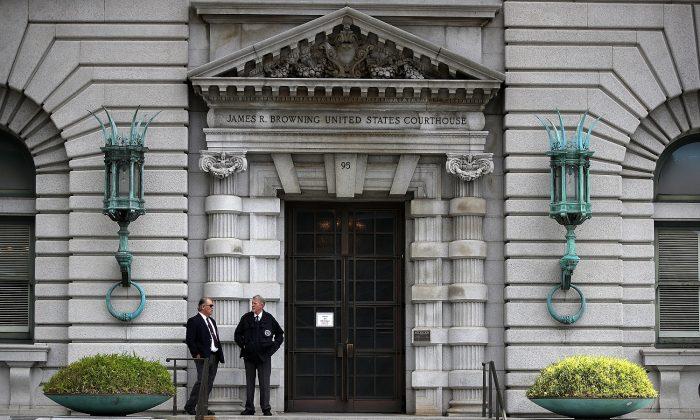President Donald Trump has an opportunity to breathe conservative air into the halls of the notoriously left-leaning Ninth Circuit Federal Court of Appeals. But the job may prove challenging.
Trump has run into his share of problems with the court, which, among other things, blocked his executive order to pause immigration from terrorism- and war-stricken countries. The order was reinstated by the Supreme Court, but not before significant delays.
The Supreme Court has reversed over 78 percent of Ninth Circuit decisions sent its way between 2007 and 2016, based on data collected by SCOTUSblog. Only the Sixth and Eighth Circuits top such a reversal rate. Most of the Ninth’s decisions, however, never make it to the Supreme Court and remain in place.
The San Francisco-based court is the largest in the country, with 29 active judges, and has a reputation for some far-left opinions.
A court’s political leaning is commonly appraised by the ratio of judges appointed by presidents of either party. The Ninth Circuit stands at 16 Democrat-appointed and 6 Republican-appointed.
The court’s left-leaning history dates back to 1970s as its expansion allowed President Jimmy Carter, a Democrat, to appoint 15 judges. President Bill Clinton then restocked the bench with 14 judges, while Presidents George W. Bush and Barack Obama picked seven each.
Trump now has a chance to fill seven vacancies. So far, he’s nominated two judges. In addition, one more judge is set to retire in August. Unfortunately for Trump, it’s Norman Randy Smith, a Republican.
Still, adding seven conservatives would almost balance the court.
The trouble is, Trump needs to have his candidates confirmed by the Senate, where Republicans only hold a 51-49 majority. Moreover, the candidates first have to be approved by the Senate Judiciary Committee, where Republicans only hold an 11-10 majority.
Also, Senators from the state where the nominee resides can ask the committee’s chairman to reject the nominee through a so-called “blue slip,” though this is an informal courtesy and the chairman, currently Chuck Grassley (R-Iowa), retains the option to break with the tradition.
The midterm elections scheduled on Nov. 6 may also mix up the odds as nine Republican-held, 24 Democrat-held, and two independent-held Senator seats are up for grabs.






Friends Read Free